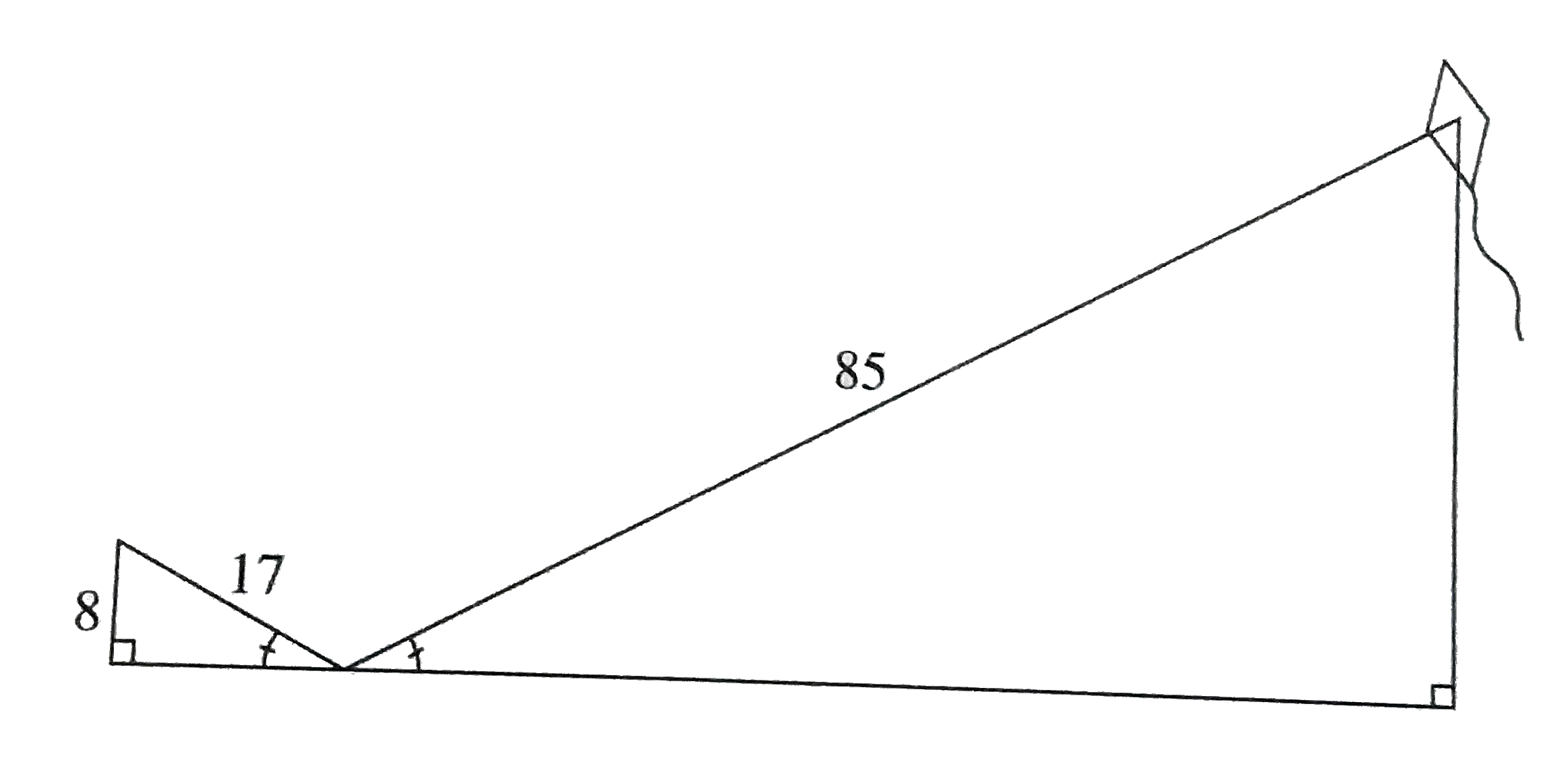An ellipse is described by using an endless string which is passed over two pins. If the axes are 6cm and 4cm, the length of the string and distance between the pins are .........
To solve the problem step by step, we will find the distance between the pins and the length of the string used to describe the ellipse.
Step 1: Identify the semi-major and semi-minor axes
Given the lengths of the axes:
- Major axis = 6 cm (which means 2a=6)
- Minor axis = 4 cm (which means 2b=4)
From this, we can find the semi-major axis a and semi-minor axis b:
a=62=3 cm
b=42=2 cm
Step 2: Calculate the eccentricity e
The eccentricity e of an ellipse is given by the formula:
e=√1−b2a2
Substituting the values of a and b:
e=√1−2232=√1−49=√59=√53
Step 3: Calculate the distance between the pins F1F2
The distance between the two pins, which are the foci of the ellipse, is given by:
F1F2=2ae
Substituting the values of a and e:
F1F2=2×3×√53=2√5 cm
Step 4: Calculate the length of the string
The length of the string used to describe the ellipse is given by:
Length of string=2a+2ae
Substituting the values we have:
Length of string=2×3+2×3×√53=6+2√5 cm
Final Results
- Distance between the pins F1F2=2√5 cm
- Length of the string = 6+2√5 cm
Given the lengths of the axes:
- Major axis = 6 cm (which means 2a=6)
- Minor axis = 4 cm (which means 2b=4)
a=62=3 cm
b=42=2 cm
The eccentricity e of an ellipse is given by the formula:
e=√1−b2a2
Substituting the values of a and b:
e=√1−2232=√1−49=√59=√53
The distance between the two pins, which are the foci of the ellipse, is given by:
F1F2=2ae
Substituting the values of a and e:
F1F2=2×3×√53=2√5 cm
The length of the string used to describe the ellipse is given by:
Length of string=2a+2ae
Substituting the values we have:
Length of string=2×3+2×3×√53=6+2√5 cm
- Distance between the pins F1F2=2√5 cm
- Length of the string = 6+2√5 cm
Topper's Solved these Questions
- BOOK - NCERT EXEMPLAR ENGLISHCHAPTER - CONIC SECTIONSEXERCISE - Objective type13videos
CONIC SECTIONS
- BOOK - NCERT EXEMPLAR ENGLISHCHAPTER - CONIC SECTIONSEXERCISE - True/False8videos
CONIC SECTIONS
- BOOK - NCERT EXEMPLAR ENGLISHCHAPTER - COMPLEX NUMBERS AND QUADRATIC EQUATIONSEXERCISE - OBJECTIVE TYPE QUESTIONS16videos
COMPLEX NUMBERS AND QUADRATIC EQUATIONS
- BOOK - NCERT EXEMPLAR ENGLISHCHAPTER - INTRODUCTION TO THREE DIMENSIONAL GEOMETRYEXERCISE - Fillers16videos
INTRODUCTION TO THREE DIMENSIONAL GEOMETRY
Similar Questions
The lengths of two sides of a triangle are 6 cm and 8 cm. Between whichtwo numbers can length of the third side fall?
View SolutionConsider a standing wave formed on a string . It results due to the superposition of two waves travelling in opposite directions . The waves are travelling along the length of the string in the x - direction and displacements of elements on the string are along the y - direction . Individual equations of the two waves can be expressed as
Y1=6(cm)sin[5(rad/cm)x−4(rad/s)t]
Y2=6(cm)sin[5(rad/cm)x+4(rad/s)t] Here x and y are in cm.
Answer the following questions.
If one end of the string is at x=0 , positions of the nodes can be described asView Solution
Knowledge Check
- Question 1 - Select One
Jasper wants to measure the altiude of his kite . He ties the kite string to a spike driven into the ground and measures the angle between the string and the ground . Then he creates two similar triangles by adjusting the distance between an-8 foot pole and the spike until the angle created by a piece of string is the same as the angle he measured previously . the length of the string to the kite is 85 feet and the length of the string to the pole is 17 feet . which of the follpowing is closest to the height , in feet , that the kite is above the ground ?
 A25B40C102D110
A25B40C102D110
Consider a standing wave formed on a string . It results due to the superposition of two waves travelling in opposite directions . The waves are travelling along the length of the string in the x - direction and displacements of elements on the string are along the y - direction . Individual equations of the two waves can be expressed as
Y1=6(cm)sin[5(rad/cm)x−4(rad/s)t]
Y2=6(cm)sin[5(rad/cm)x+4(rad/s)t] Here x and y are in cm.
Answer the following questions.
Amplitude of simple harmonic motion of a point on the string that is located at x=1.8cm will beView SolutionTwo masses 2 kg and 4 kg are connected at two ends of light inextensible string passing over a frictionless pulley . If the masses are released , then find the accelaration of the masses and the tension in the string .
View SolutionFind the area of a trapezium whose parallel sides are of lengths 10cm and 12cm and the distance between them is 4cm.
View SolutionTwo masses 2 kg and 4 kg are connected at the two ends of light inextensible string passing over a frictionless pulley. If the masses are released, then find the acceleration of the masses and the tension in the string.
View SolutionThe length of common chord of two intersecting circles is 30 cm. If the diameters of these two circles be 50 cm and 34 cm, calculate the distance between their centres.
View SolutionA string of length 1.5 m with its two ends clamped is vibrating in fundamental mode. Amplitude at the centre of the string is 4 mm. Minimum distance between the two points having amplitude 2 mm is:
View SolutionA string of length 1.5 m with its two ends clamped is vibrating in fundamental mode. Amplitude at the centre of the string is 4 mm. Minimum distance between the two points having amplitude 2 mm is:
View Solution

